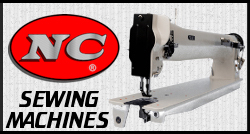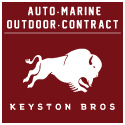-
 Cody Lunning
39Okay so I know 2 ways of doing this. And I have to do some for a few bench seats coming up and I’d like to get peoples opinions on which method they prefer. Or if someone has a way I don’t know.
Cody Lunning
39Okay so I know 2 ways of doing this. And I have to do some for a few bench seats coming up and I’d like to get peoples opinions on which method they prefer. Or if someone has a way I don’t know.
The first method we were taught in school was sew your pleats like normal. Then fold the material on the stitch line, so you’re looking at the back of the material and sew next to the original stitch like you would any hidden seam and that’s it.
Method 2. Is you cut your pleats out as individual pieces factoring in your Seam Allowance. Out the top faces together and sew like any hidden seam, and repeat.
I like both for various reasons. The first is less cutting work, but if you’re making a long run, hard to fit in the machine at times and I tend to screw up my calculations and don’t factor shrinking enough from the stitches.
The other I like cause you can make it in easier to handle sections but is a lot of cutting work and I feel easier to get random size pleats if not super careful.
What are others thoughts? -
 Robert Webb
16The first way I like because I think thet come out more uniform. I also like the fact then when sewing that second stitch the material is going away from you and not stuffed under the machines arm.
Robert Webb
16The first way I like because I think thet come out more uniform. I also like the fact then when sewing that second stitch the material is going away from you and not stuffed under the machines arm. -
 Cody Lunning
39@Robert Webbthat’s a good point about it going away from, instead of under the machine. I prefer this method also cause of the uniformity of the pleats like you mentioned. But I do like the easy of working smaller panels.
Cody Lunning
39@Robert Webbthat’s a good point about it going away from, instead of under the machine. I prefer this method also cause of the uniformity of the pleats like you mentioned. But I do like the easy of working smaller panels. -
Jesse Durkee
19I like the third way. Mark your fold lines to account for seam allowance. I also mark the foam where the fold line is. Use an edge foot on the fold line so you get your perfect seam allowance. -
 Cody Lunning
39@Jesse Durkee that is also how I do it. I mark all my lines on the foam. I run an initial stitch in the middle. I feel it helps the foam fold easier there. (Think traditional pleat.) Then when I fold it my line is there for where to sew the next stitch for a hidden pleat. My edge feet just showed up in the mail, so now I can do as you mentioned. But until now I just followed my lines.
Cody Lunning
39@Jesse Durkee that is also how I do it. I mark all my lines on the foam. I run an initial stitch in the middle. I feel it helps the foam fold easier there. (Think traditional pleat.) Then when I fold it my line is there for where to sew the next stitch for a hidden pleat. My edge feet just showed up in the mail, so now I can do as you mentioned. But until now I just followed my lines. -
 Keith Mayne
38Three ways I do it.......... 1. traditional sew leather to calico, backfolding and sewing then stuff with padding.............2. Sew material to calico backed foam sliced along lines with 1/8 inch sa allowing extra for fulness and sa..........3.glue material to foam, cut into strips then sew together 1/8 inch sa allowing extra for fulness and sa.
Keith Mayne
38Three ways I do it.......... 1. traditional sew leather to calico, backfolding and sewing then stuff with padding.............2. Sew material to calico backed foam sliced along lines with 1/8 inch sa allowing extra for fulness and sa..........3.glue material to foam, cut into strips then sew together 1/8 inch sa allowing extra for fulness and sa.
For all above I first make a cardboard strip marked out to what I want finished panel to measure.Then do several test pieces to find correct measurements.
I normaly use my 1/8 inch edge guide to keep everything equal. -
 Cody Lunning
39@Keith Mayne all good ideas! I’m not sure I totally understand step number 2. Happen to have pictures? I especially like the idea with the cardboard. Make quick work of duplicating lines.
Cody Lunning
39@Keith Mayne all good ideas! I’m not sure I totally understand step number 2. Happen to have pictures? I especially like the idea with the cardboard. Make quick work of duplicating lines. -
 Keith Mayne
38I think my 2 may be the same as Jesse's , your first and poss traditional tuck and roll (I'm in the uk so terminology may be different).
Keith Mayne
38I think my 2 may be the same as Jesse's , your first and poss traditional tuck and roll (I'm in the uk so terminology may be different).
Glue 10mm foam to some calico and then as well as marking the lines use a razor to slice almost to the backing.The top material I then mark the lines and sew along them to help it fold.Foam on right , material on left, 1/8 inch right sided guide foot, align folded stitched material with razor cut and sew, roll material over to next cut line and repeat.
I have had lengths of clear plastic cut into one metre strips from one inch wide up to three inches wide going up 1/4 inch at a time.Makes marking out pleats a lot easier.
Welcome to The Hog Ring!
This forum is only for auto upholstery pros, apprentices and students. Join today to start chatting.
More Discussions








- Terms of Service
- Useful Hints and Tips
- Sign In
- Created with PlushForums
- © 2025 The Hog Ring


